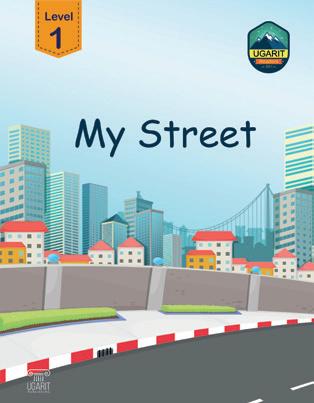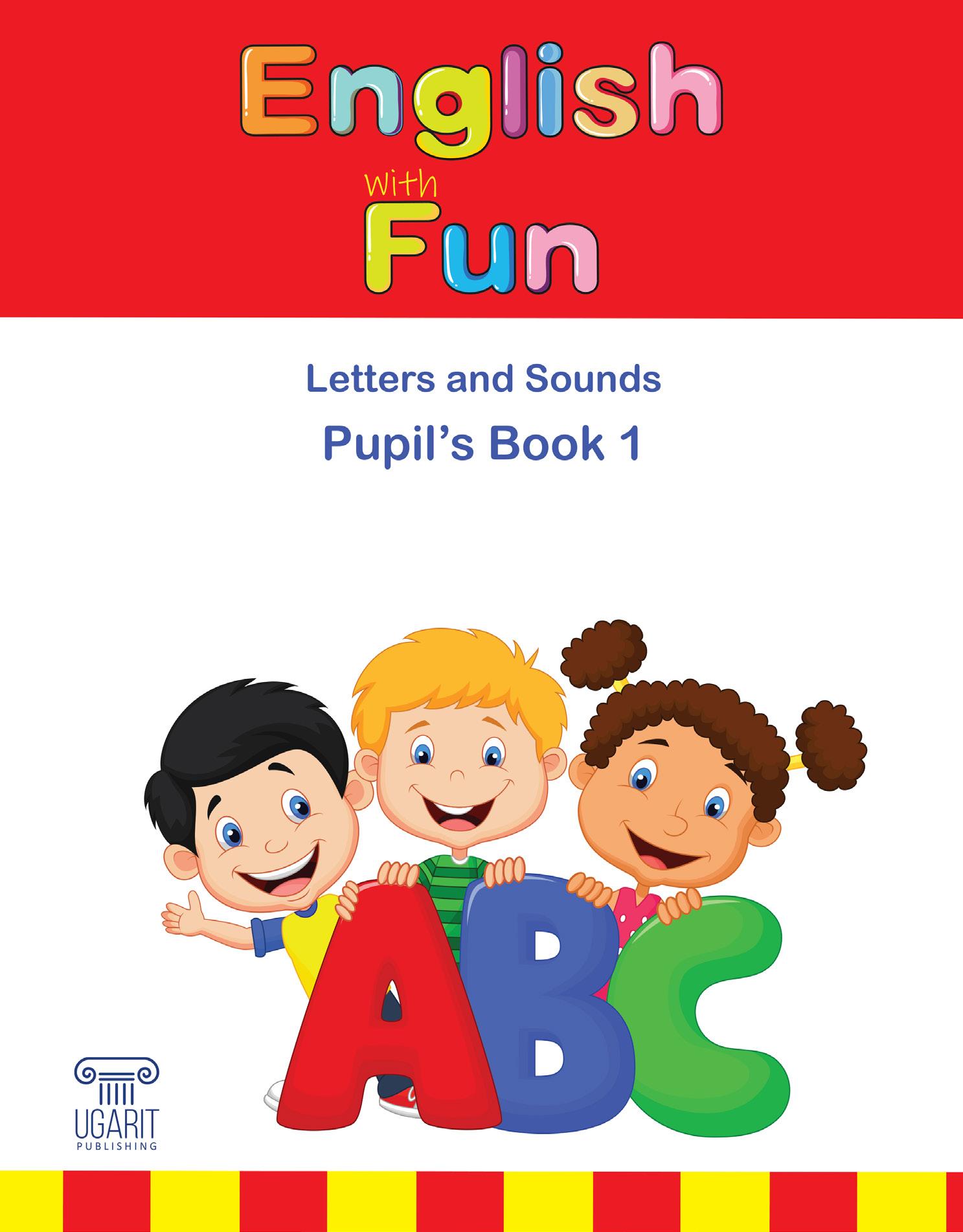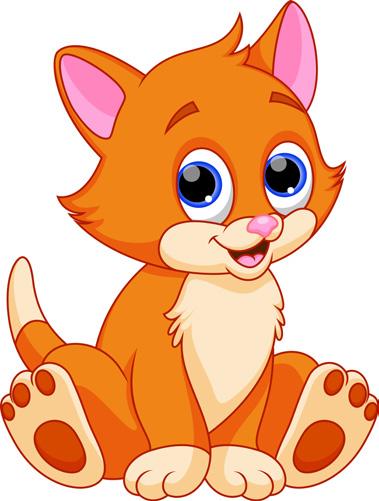Bright Stars



Unit 3 p.4
- Talk about supermarkets, hospitals, schools, book shops, bakeries, fashion shops, and parks
- Role-play to use phrases acquired through conversations
- Read short informational texts about places in our neighborhood
- Sort items according to the shops we buy them from
- Read a map
- Read a poem for specific information
- Read a narrative story, “At The Park”, for comprehension
- Identify the meaning of unknown words in a text
Unit 4 p.42
Jobs
- Talk about teachers, doctors, nurses, firefighters, policemen, painters and builders
- Role-play to use phrases acquired through conversations
- Read factsheets about jobs
- Picture reading
- Sort nouns into categories
- Read a story,”A Scary Night”, for details
- Read a poem for comprehension
- Write simple sentences demonstrating command of the use of capitalization, comma, and period
- Write short sentences using nouns, pronouns, and verbs
- Ask and answer Yes and No questions
- Demonstrate command of using nouns and verbs in sentences
- Identify 2-syllable words
- Determine the meaning of new vocabulary items and other language uses based on content
- Write factual sentences about jobs
- Write factsheets about new jobs
- Demonstrate command of the use of adjectives and nouns in sentences
- Demonstrate command of the use of capitalization and end punctuation
- Identify 3-syllable words
- Determine the meaning of new vocabulary items and other language uses based on content
Talk to your classmate. What do you know at these places?

We buy fruit, vegetables, meat, and groceries from the grocery store.
Talk to your classmate. Then answer the questions.
1. What else can you buy from the grocery store?
2. Is there a grocery store in your neighborhood? What is it called?
3. How often do you go there? Who with?




4. What is your favorite thing to buy?
5. Draw your favorite thing and tell your classmate about it.













2. Look at the picture. Then read the text.
I go to the hospital when I am sick. I can see doctors and nurses. They are kind to me.
Talk to your classmate. Then answer the questions.
1. Do you like hospitals?
2. When do people go to the hospitals? Underline the clue from the text.
3. Who works at the hospital?
4. Are they nice?
5. Color the doctor and give her a name. Tell your classmate about her job.
3. Look at the picture. Then read the text.
I like my school. It is big. I study English. I study Math. I study Science. I play and have fun, too.
Talk to your classmate. Then answer the questions.
1. What do you study at the school?
2. Can you play at the school?
3. Can you sing at the school?
4. What is your favorite subject?







5. Draw a picture of your school. Then tell your classmate about it.










4. Look at the picture. Then read the text.
The bookstore is my favorite place. I can read books. I can buy books.
“The Cat and the Rat” is my favorite book.
Talk to your classmate. Then answer the questions.
1. Can Sally read books at the bookstore?
2. Can she buy books?
3. What is her favorite book?
4. Do you like bookstores? Why?
5. What is your favorite book?
6. Underline a pronoun + can + verb.
7. Circle two words that rhyme with bat.
















8. Draw your favorite book. Then tell your classmate about it.

5. Look at the book covers. Then answer the questions.
Written by: Tom RightIllustrated by: Sue Johns

1. What is the title of the book?
2. Who is the writer? What does he do?
3. Who is the illustrator? What does he do?
English with Fun is a course for children between 3-5 years old and learning English for the first time. The course develops the handwriting skills in addition to letter and sound recognition. It offers children opportunities to learn a wide range of lexical items and essential sight words. The course also includes a wide range of highly motivating images, and activities that are based on fun, games, interaction and 21st Century Skills.
Key features
• Build confidence in recognizing letters and sounds.
• Help children to recognize print in the environment.
• Empower children with lots of lexical items and essential sight words.
• Develop language starting from “Letter Level” to “Word Level” and ending with “Simple Sentence Level”.
• Link learning to real life outside the classroom .
• Develop thinking skills and social communication through a variety of engaging activities.
• Fun images and stories associated to letters and sounds.
Price: 15
www.ugaritpublishing.com

4. What is the price of the book?
5. Circle the ISBN.
6. Draw a square around the publisher.
6. Look at the picture. Then read the text.
I like the bakery. It smells good. The baker makes bread and cakes. I like fresh bread.
Talk to your classmate. Then answer the questions.
1. A baker makes .
2. The bakery smells .
3. Write a pronoun from the text .












4. Draw your favorite food from the bakery. Then tell your classmate about it.





7. Look at the picture. Then read the text.
At the clothes store I can buy shirts and skirts. I can buy hats and bags. I can buy shoes, too.
Role-play the dialogue and write the questions. Then answer with a partner. Can you think of more?
Can I buy shoes from a clothes store?
Yes, you can.
8. Look at the picture. Then read the text.
I like the park. I see my friends at the park. We play on the slide. We play on the swing. We play ball, too.
Work with your classmate and answer the questions.
1. Choose the correct answer.
a. The text tells about playing at the________.
a. park
b. school
b. Tom can see his ________ at the park.
a. family
2. Write the answers.
b. friends
a. Can you play ball at the park?
b. Can you swim at the park?
3. Answer the questions.
a. Is there a park in your neighborhood?
b. How often do you go there?
c. What is your favorite ride at the park?
d. Underline a noun for a place.
e. Circle a plural noun. Write the singular form.
1. Read and role-play with a classmate.
I need to buy a T-shirt.
You should go to the clothes store.
2. Match the items in the shopping list to the correcct store.
GROCERY
cake
apple book
tomato
dress
hat comics
1. Show your classmate the way to each place: bakery, grocery store, school, hospital, and bookstore.
Grocery
1. Draw a map of your neighborhood.
2. Show the places you can see.
3. Talk about what you can do at each place.
a. A verb is a word that describes an action.
Examples: drink play sing swim
1. Look at the picture and say the word. Then circle verb or noun. verb noun verb noun verb noun verb noun
b. Verbs change when we use them with different Pronouns.
I You We They verb I swim.
1. Circle the correct pronoun to complete each sentence. He We speaks English. They She dances well.
I It plays all day.
We She sleep early.
I They sing a song.
1. Circle the correct form of the verbs.
She ____ pizza.
He ____ everyday.
We ____ to school.
Aya ____ milk.
They ____ music.
Sam and Sally ____ the room.
It ____ in winter.
Mom ____ fish.
We ____ in a big home.
eat eats swim swims walk walks drink drinks like likes clean cleans rain rains cook cooks live lives
2. Underline the verb in each sentence. Then write the correct form. She like reading.
They makes cake.
Tom read a book.
I kicks the ball.
Sara jump high.
The cat run fast.
Some words have two syllables. Remember, a syllable is a part of a word that has one vowel sound.
Examples: dinner din/ner kitchen kit/chen
1. Rewrite the two syllables of each word separately. ladder

c r v h b
3. Circle the pictures that end with the sound. an
4. Circle the pictures that end with the sound. ab
Look,
A little boy with a hat
Looks at the cat near the vat.
The cat is hungry
Looking for a rat.
The rat is in that flat
Hiding at the doormat.
It does not like bats
That hang on slats.
The little boy wants the cat
To play with and to pat
And maybe have a little chat
About that hiding rat.
1. Think of a title for the poem.
2. Underline the rhyming words.
3. Circle the two-syllable words.
4. Write the correct pronouns:
a. boy:
b. cat:
c. rat:
5. Who looks at the cat?
6. Who looks at the rat?
7. Why do you think the rat hides from the bats?
8. Which word in the text means “small”?
9. Draw a picture of the rat near the mat.
Sam and Anna are in the park. They like to play on the rides.
Anna goes down the slide. Sam plays on the swing.
Oh, no! Anna falls down and hurts her arm.
Sam takes her to the hospital.
The next day she feels fine.
1. Tick ( ) correct or ( ) incorrect.
a. Sam and Anna play in the park. ( )
b. Sam plays on the slide. ( )
c. Anna plays on the swing. ( )
d. Anna hurts her arm. ( )
e. Sam takes her to school. ( )
2. Write a sentence from the text that includes a pronoun + verb.
3. Circle three words starting with capital letters.
4. Underline a proper noun.
5. Write a noun for a place and a person.
Ugarit Publishing
UK Office 71-75 Shelton Street
Covent Garden
London WC2H 9JQ
United Kingdom
UAE Office Sharjah Publishing City
Business Centre
Sharjah
United Arab Emirates

Media License Number: 0144582
Trading License Number: 300460
Media File Number: MF-02- 2446769
www.ugaritpublishing.com
info@ugaritpublishing.com
Bright Stars - B
The moral rights of the author have been reserved
First published in 2023
Copyright © 2023 Ugarit Publishing
ISBN: 978-9948-802-92-1
All rights reserved. No part of this publication may be reproduced stored in a retrieval system, or transmitted, in any form or by any means electronic, mechanical, photocopying or otherwise without the prior written permission from Ugarit Publishing
This work must not be circulated in any other form. Under no circumstances may any part of this book be photocopied for sale
Printed in the United Arab Emirates
This theme-based English Language and Arts course helps kindergarten children to develop their linguistic and communicative skills. The course is also curriculum-based. It helps the children to:
• Demonstrate command of the standard English grammar and usage when writing or speaking about different themes
• Demonstrate command of the standard English capitalization, punctuation, and spelling when writing
• Determine the meaning of words based on content
• Understand and respond to a wide range of reading genres

• Demonstrate command of key phonetic blends and use them in reading and speaking
• Participate in collaborative conversations with peers
• Use a combination of drawing and writing to express themselves and respond to texts creatively